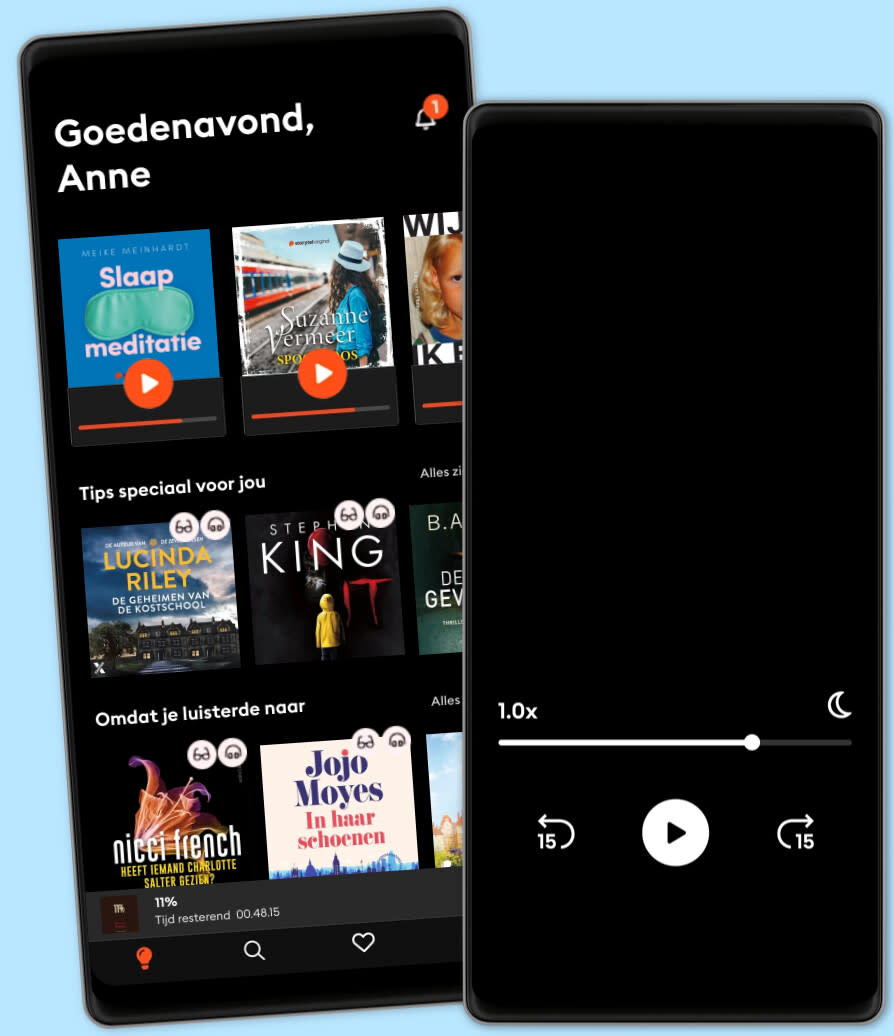Luisteren én lezen
Meer dan 1 miljoen luisterboeken en ebooks in één app. Ontdek Storytel nu.
- Switch makkelijk tussen luisteren en lezen
- Elke week honderden nieuwe verhalen
- Voor ieder een passend abonnement
- Opzeggen wanneer je maar wilt
OpenGL 4 Shading Language Cookbook: Build high-quality, real-time 3D graphics with OpenGL 4.6, GLSL 4.6 and C++17, 3rd Edition
- Door
- Uitgever
- Taal
- Engels
- Format
- Categorie
Non-fictie
Over 70 recipes that cover advanced techniques for 3D programming such as lighting, shading, textures, particle systems, and image processing with OpenGL 4.6
Key Features
• Explore techniques for implementing shadows using shadow maps and shadow volumes
•
• Learn to use GLSL features such as compute, geometry, and tessellation shaders
•
• Use GLSL to create a wide variety of modern, realistic visual effects
Book Description
OpenGL 4 Shading Language Cookbook, Third Edition provides easy-to-follow recipes that first walk you through the theory and background behind each technique, and then proceed to showcase and explain the GLSL and OpenGL code needed to implement them.
The book begins by familiarizing you with beginner-level topics such as compiling and linking shader programs, saving and loading shader binaries (including SPIR-V), and using an OpenGL function loader library. We then proceed to cover basic lighting and shading effects. After that, you'll learn to use textures, produce shadows, and use geometry and tessellation shaders. Topics such as particle systems, screen-space ambient occlusion, deferred rendering, depth-based tessellation, and physically based rendering will help you tackle advanced topics.
OpenGL 4 Shading Language Cookbook, Third Edition also covers advanced topics such as shadow techniques (including the two of the most common techniques: shadow maps and shadow volumes). You will learn how to use noise in shaders and how to use compute shaders.
The book provides examples of modern shading techniques that can be used as a starting point for programmers to expand upon to produce modern, interactive, 3D computer-graphics applications.
What you will learn
• Compile, debug, and communicate with shader programs
•
• Use compute shaders for physics, animation, and general computing
•
• Learn about features such as shader storage buffer objects and image load/store
•
• Utilize noise in shaders and learn how to use shaders in animations
•
• Use textures for various effects including cube maps for reflection or refraction
•
• Understand physically based reflection models and the SPIR-V Shader binary
•
• Learn how to create shadows using shadow maps or shadow volumes
•
• Create particle systems that simulate smoke, fire, and other effects
•
Who this book is for
If you are a graphics programmer looking to learn the GLSL shading language, this book is for you. A basic understanding of 3D graphics and programming experience with C++ are required.
© 2018 Packt Publishing (Ebook): 9781789340662
Publicatiedatum
Ebook: 28 september 2018
Anderen genoten ook van...
- Surviving a Nuclear Blast: What to do before, during, and after the emergency Sarah Connor
- A Rare Recording of Physicist Richard Feynman Explaining Scientific Method Richard Feynman
- 101 Amazing Facts about Dinosaurs Jack Goldstein
- The Winter War 1939–40 Philip Jowett
- SBF: How The FTX Bankruptcy Unwound Crypto's Very Bad Good Guy Brady Dale
- Pearl Harbor Attacked: Every Known Surviving Radio Broadcast from Dec 7, 1941 Jim Hodges
- Breaking and Entering-The Extraordinary Story of a Hacker Called "Alien": The Extraordinary Story of a Hacker Called "Alien" Jeremy N. Smith
- Chefs, Drugs and Rock & Roll: How Food Lovers, Free Spirits, Misfits and Wanderers Created a New American Profession Andrew Friedman
- World War II: Air War Stephen W. Sears
- Game Theory Basics Explained Introbooks Team
- De Camino Anya Niewierra
4.6
- Mama huilt harder: Twee kinderen, twee depressies Leslie Keijzer
4.6
- It ends with us: Nooit meer is de Nederlandse uitgave van It Ends With Us Colleen Hoover
4.4
- Slaapmeditatie: 30 minuten meditatie voor ontspanning en slaap Meike Meinhardt
4.2
- Longeneeslijk: Hoe mijn kanker pure pech én puur geluk kon zijn Hanneke Mijnster
4.7
- De nomade Anya Niewierra
4.6
- Die ene melding Wil Thijssen
4.4
- B&B Toscane - Geheim verleden Suzanne Vermeer
3.9
- Ardèche Linda van Rijn
3.5
- Harry Potter and the Philosopher's Stone J.K. Rowling
4.7
- De mens is een plofkip: Hoe de voedingsindustrie ons ziek maakt Teun van de Keuken
4.6
- Groeipijn: Achter je liggen de lessen en voor je de kansen Ray Klaassens
4.7
- Harry Potter and the Chamber of Secrets J.K. Rowling
4.8
- De havermelkelite: Hoe de nieuwe yup de stad onherkenbaar verandert Jonas Kooyman
4
- Harry Potter and the Prisoner of Azkaban J.K. Rowling
4.8
Kies je abonnement:
Meer dan 1 miljoen verhalen
Kids Mode (kindvriendelijke omgeving)
Download boeken voor offline toegang
Altijd opzegbaar
Unlimited
Voor wie onbeperkt wil luisteren en lezen.
1 account
Onbeperkte toegang
Meer dan 1 miljoen luisterboeken en ebooks
Altijd opzegbaar
Flex
Voor wie Storytel wil proberen.
1 account
10 uur/30 dagen
Spaar ongebruikte uren op tot 50 uur
Meer dan 1 miljoen luisterboeken en ebooks
Altijd opzegbaar
Premium
Voor wie zo nu en dan wil luisteren en lezen.
1 account
30 uur/30 dagen
Meer dan 1 miljoen luisterboeken en ebooks
Altijd opzegbaar
Family
Voor wie verhalen met familie en vrienden wil delen.
2-3 accounts
Onbeperkte toegang
Meer dan 1 miljoen luisterboeken en ebooks
Altijd opzegbaar
2 accounts
€18.99 /30 dagenNederlands
Nederland
